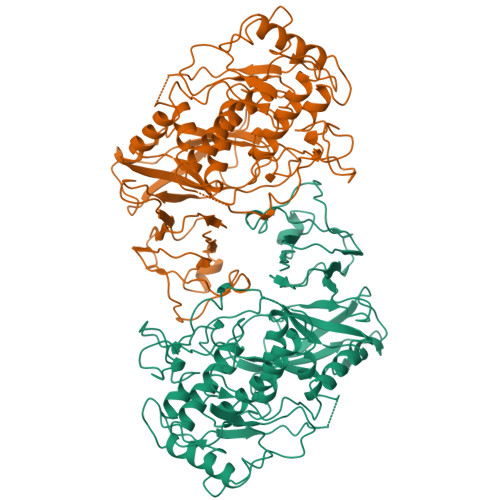The Cupredoxin-like Domains in Hemocyanins.
Jaenicke, E., Buchler, K., Markl, J., Decker, H., Barends, T.R.M.(2009) Biochem J
- PubMed: 20025608
- DOI: https://doi.org/10.1042/BJ20091501
- Primary Citation of Related Structures:
3L6W - PubMed Abstract:
Haemocyanins are multimeric oxygen transport proteins, which bind oxygen to type 3 copper sites. Arthropod haemocyanins contain 75-kDa subunits, whereas molluscan haemocyanins contain 350-400-kDa subunits comprising seven or eight different 50 kDa FUs (functional units) designated FU-a to FU-h, each with an active site. FU-h possesses a tail of 100 amino acids not present in the other FUs. In the present study we show by X-ray crystallography that in FU-h of KLH1 (keyhole-limpet-haemocyanin isoform 1) the structure of the tail domain is cupredoxin-like but contains no copper. The copper-free domain 3 in arthropod haemocyanin subunits has also recently been reinterpreted as being cupredoxin-like. We propose that the cupredoxin-like domain in both haemocyanin types once served to upload copper to the active site of the oxygen-binding domain.
Organizational Affiliation:
Institut für Molekulare Biophysik, Johannes Gutenberg-Universität, Jakob Welder Weg 26, 55128 Mainz, Germany. elmar.jaenicke@uni-mainz.de
















